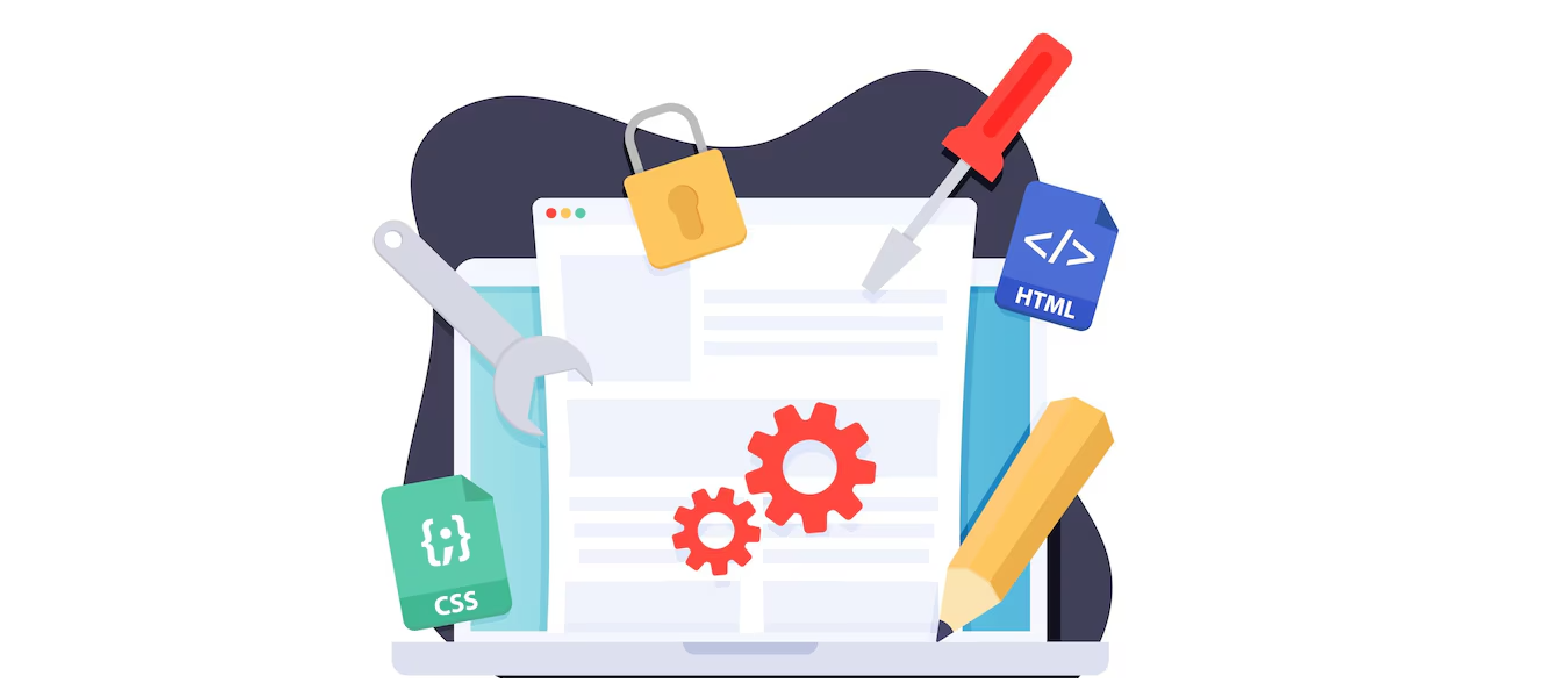Open enrollment periods present an opportunity for employees to maximize their benefits for the next year. During these times, employees can enroll in health insurance plans, modify open enrollment options, increase life insurance and retirement contributions, and make other options within the guidelines set by employers.
However, to fully benefit from open enrollment solutions, employees must take the time to research and compare all available options for open enrollment. They should analyze choices based on their needs, priorities, family circumstances, and financial situations. A thorough review of costs, coverage details, medical considerations, and life changes helps employees select benefits that offer the best fit and value.
This guide provides an in-depth look at the various open enrollment options employees should evaluate to ensure they choose benefits that meet their requirements. Here we will discuss health insurance choices, retirement plan decisions, life insurance coverage amounts, and other benefit alternatives.
With careful analysis of all factors, employees can make informed selections that optimize convenience, cost, and coverage for the coming year. A complete assessment of available open enrollment options during open enrollment periods can significantly improve employees’ benefits and financial well-being.
What is open enrollment?
Open enrollment for benefits is the period when employees can make changes to their benefit selections, usually health insurance plans. Companies hold open enrollment once a year, typically in the fall for January 1 coverage.
While selecting options of open enrollment , employees can change health insurance plans, add or drop dependents from coverage, and make other open enrollment options selection for the upcoming year. Benefits chosen take effect from January 1 and remain in place for the full year. If employees are satisfied with their current coverage, they don’t need to take action. But some options like FSAs require re-enrolling. Employees can only enroll in an HSA during open enrollment period.
Employees should review all options to ensure they have comprehensive, cost-effective coverage. Human resources usually provide materials and meetings to help employees make decisions. After open enrollment options period ends, employees usually cannot make benefit changes until the next open enrollment solutions, unless they experience a qualified life event.
Importance of open enrollment options for employees
Open enrollment options benefits employees by providing increased access to benefits at affordable costs. With these options, companies offer employees the ability to enroll in benefits at specific times during the year.
This gives employees more flexibility and control over their open enrollment options. They can review their coverage needs and choose or change plans during open enrollment periods. Open enrollment allows employees to make informed selection of options that align with their situations and priorities.
Employees value open enrollment period because it gives them solutions for benefits enrollment. They can switch from one insurance carrier to another or alter coverage levels. They gain the freedom to select the health, dental, vision, life insurance, and other benefits that best suit their current needs. This eliminates the problem of being stuck with suboptimal coverage for a full year.
Open enrollment options also help control costs for employees. With multiple plans and carriers to choose from, employees can compare shops to find the most affordable coverage that still meets their requirements. Competition among insurance providers keeps pricing in check for open enrollment options. Higher participation rates that result from open enrollment further help reduce premiums by spreading risks across more people. Overall, open enrollment period allows employees access to better, more cost-effective open enrollment options.
Importance of adhering to the enrollment timeline
Open enrollment timelines are important for both employers and employees. Respecting these deadlines ensures employees have access to the correct open enrollment options and employers remain by regulations.
Employees must enroll or make changes to their benefits during the allotted open enrollment period. If they miss this window, they will be stuck with the same coverage for the entire plan year. Only certain qualifying life events, like marriage or the birth of a child, allow changes outside open enrollment options.
For employers, following open enrollment timelines is critical to properly set up employee benefits and comply with laws. Insurance companies and benefits enrollment company need accurate enrollment information within the designated period to activate and price plans for the coming year. Failure to adhere to deadlines can result in denied claims, billing discrepancies, and even fines.
Employees should enroll or waive open enrollment options, designate beneficiaries and dependents, and choose coverage levels during open enrollment. Making decisions after the deadline may not be permitted and could leave gaps in coverage. Employees should actively participate during open enrollment by reviewing plan open enrollment options, comparing costs, and checking that their selections match their needs for the upcoming year. Adhering to enrollment timelines ensures employees have benefits in place when they need them most.
Employers and employees should both prioritize strict adherence to open enrollment options period. This ensures smooth benefits administration, accurate records, and proper coverage for the new plan year.
Types of open enrollment Benefits Offered
Here are the types of benefits offered during open enrollment options period:
- Health insurance: Employees choose between HMO, PPO, and HDHP plans. Health savings accounts can also be enrolled in this open enrollment options.
- Dental and vision insurance: This open enrollment options covers checkups, cleanings, glasses, and contacts. Premiums are typically lower than health insurance.
- Life insurance: This open enrollment options allows employees to enroll, increase or decrease life insurance coverage amounts.
- Disability insurance: Employees select short-term and long-term disability plans for financial protection in this open enrollment options.
- 401(k) and retirement plans: Employees enroll, determine contribution amounts and allocate investments for the new plan year in this open enrollment options.
- Flexible spending accounts: Funds can be set aside on a pre-tax basis for healthcare and dependent care expenses in this open enrollment options.
- Voluntary benefits: Include accident insurance, critical illness coverage, and hospital indemnity plans.
- Legal assistance and identity theft protection: Some employers offer these benefits enrollment services during open enrollment.
- Pet insurance: This open enrollment options are rarely offered but available at some companies.
- Other niche benefits: Based on employer, these open enrollment options could include wellness programs, gym memberships, education assistance, etc.
Employees should review all available open enrollment options during open enrollment to optimize the benefits package for their specific needs and priorities. This ensures they have the right coverage and protection in place for the coming year.
Health Insurance open enrollment options
Following factors are required to be considered by employees and employers in assessment of health Insurance options-
- Choose a plan: Employees select from HMO, PPO, and HDHP plans offered by the employer.
- Adjust coverage level: Increase or decrease chosen plan from self-only to family coverage.
- Change doctors: Enroll in a plan with different in-network physicians and hospitals.
- Add or remove dependents: Employees add eligible dependents in their open enrollment options like spouses or children to coverage.
- Compare premium costs: Higher deductible plans often have lower premiums but larger out-of-pocket costs.
- Analyze deductibles: Trade-off between lower monthly premiums vs. higher deductibles and co-payments.
- Check prescription drug coverage: Consider medications and compare plans’ drug formularies.
- Review out-of-pocket maximums: Max amount employee pays annually before the insurance covers 100%.
- Consider a health savings account: Contribute pre-tax funds to spend on qualified medical costs.
- Waive coverage: Employees choose to waive employer coverage if another plan is available.
Open enrollment options ensure employees examine their health insurance options annually to optimize cost and coverage for the coming year. Employees should analyze choices for open enrollment solutions carefully based on factors most important to their health needs and budget.
Let’s Simplify Open Enrollment Together
Reach out to A3logics for a smoother enrollment experience
Retirement Plan open enrollment options
During open enrollment, employees have the opportunity to enroll in their company’s retirement plan, change their contribution amount and make adjustments to their investments. Open enrollment options occur once per year, usually in the fall or winter.
The most important decision is how much to contribute. Employees should contribute at least enough to get any employer match. However, employees should base their contribution on what they can afford while still meeting other financial goals.
Employees can typically choose how their contributions are invested among the plan’s investment open enrollment options. While selecting open enrollment options, they can rebalance their investments to reflect their risk tolerance, investment objectives, and time horizon. Common investment open enrollment options include stocks, bonds, target date funds, and stable value funds. Employer plans often offer a broad range of low-cost investments from which to choose.
Retirement plans offer valuable tax benefits in the open enrollment options. Contributions are made with pre-tax income, lowering an employee’s current tax bill. Investment earnings accumulate tax-deferred until withdrawals in retirement when taxes are typically at a lower rate. The combination of pre-tax contributions, tax-deferred growth, and any employer match can add up to significant long-term savings.
Life Insurance and Disability Coverage open enrollment options
Employees also have the opportunity to enroll in life insurance and disability coverage offered by their employer. They can also make changes to their current coverage levels in open enrollment . For life insurance, employees can choose how much coverage they need based on their income, debts, and dependents. The options of open enrollment typically include term life insurance which covers a specific period and whole life insurance with coverage for the employee’s lifetime. Employees often have the option to purchase 1 to 5 times their annual salary in their open enrollment solutions.
Disability coverage helps replace a portion of lost income if an employee becomes unable to work due to illness or injury. Short-term disability covers a shorter period of typically 3 to 6 months while long-term disability provides open enrollment options for longer durations. Employees can choose the waiting period before open enrollment options begin and the percentage of salary to replace while disabled, up to a maximum amount.
During open enrollment, employees should review their life insurance and disability needs based on changes in family status, income, or job responsibilities. They can then adjust their coverage levels accordingly. For example, employees may need more life insurance upon marriage or the birth of a child or they may be able to decrease coverage as children grow older.
Enrolling in or making changes to life insurance and disability coverage during open enrollment ensures employees have the protection they need starting the next plan year. Employees should carefully consider factors like income, assets, debts, dependents, and lifestyle to determine appropriate coverage levels.
Flexible Spending Accounts (FSAs) open enrollment options
Employees can elect to contribute to a flexible spending account (FSA) offered by their employer. FSAs allow employees to set aside pre-tax dollars to pay for eligible out-of-pocket health care and dependent care expenses.
The biggest open enrollment decision is how much to contribute. Employees should estimate their anticipated medical and dependent care expenses for the upcoming plan year. These include deductibles, copays, prescriptions, dental and vision costs, and child or elder care fees. Then they can contribute up to the plan maximum in their open enrollment .
Employees must use all the funds in their FSA by the end of the plan year or they will forfeit any leftover amount. For this reason, it’s important not to overfund an FSA during open enrollment. However, contributing too little can also leave money on the table. Employees should base their contribution amount for open enrollment options on realistic expense estimates.
Contributing to a health care FSA can significantly reduce taxes. Since amounts are deducted from paychecks before income taxes, employees save around $350 to $400 in taxes for every $1,000 contributed. The accounts also offer spending flexibility as the full annual contribution amount is available from the first day of the plan year.
Employee assistance programs (EAPs) open enrollment options
During open enrollment, employees may be able to enroll in an employee assistance program (EAP) offered by their employer. EAPs provide confidential counseling and support services to address personal or workplace issues that impact employees’ lives.
The main open enrollment decision is whether to enroll in the EAP. Most EAPs are offered at no cost to employees, but enrollment is typically optional. Employees decide if they may benefit from the program’s services.
EAPs offer short-term, solution-focused counseling for a wide range of issues. This includes stress, anxiety, depression, relationship problems, grief, legal concerns, financial worries, and more. EAPs can also provide work-life support for common life challenges like childcare, eldercare, adoption, education, and everyday living needs. Benefits enrollment services may include referrals, resources, online information, and advice.
Many employees do not realize the value of EAPs until they need them. However, enrolling during open enrollment ensures employees have immediate access to support services if unexpected issues arise. All EAP interactions and records remain strictly confidential and separate from employee personnel files.
Educational assistance programs have open enrollment options
During open enrollment, employees learn if their employer offers an educational assistance program that reimburses costs for job-related courses or degrees. It will be offered if-
- Eligible employees decide to enroll based on interest in advancing their skills and careers.
- Courses must support business objectives to qualify for reimbursement.
Reimbursement forms include:
- Flat rates up to a maximum dollar amount
- Percentage of tuition and fees covered, typically 75% to 100%
- Lump sums upon degree or certificate completion
Reimbursement often requires the employee to remain with the company for a set time after the courses end. This ensures the employer open enrollment options from investment in their development. Employees choose degree programs or certifications aligned with their duties and career paths.
Marriage, divorce, and family planning open enrollment options
Employees’ eligibility for certain benefits can change due to marital status or dependents. Getting married or divorced, or having or adopting children can impact benefit needs.
If an employee gets married, they can enroll their spouse in benefits like health insurance, dental, vision, and life insurance. An employee who divorces should remove their ex-spouse from coverage to avoid paying for unauthorized benefits. Employees who have or adopt children can enroll new dependents in health, dental, and vision insurance. They may also need to increase life insurance coverage to adequately provide for their family.
Employees experiencing changes should review and update their open enrollment options selections during open enrollment. This includes adding or removing spouses and dependents from coverage, confirming or changing beneficiaries for life insurance and retirement accounts, and adjusting coverage levels as needed. Resources departments assist with paperwork to update benefits based on life changes.
Job changes and relocation open enrollment options
Employees experiencing changes like a new job, job transfer, or relocation should review and update their benefits. Taking on a different role within the company or transferring to a new location may affect eligibility for certain open enrollment solutions.
Employees moving to a new job or position should confirm they qualify for the same benefits as their new role. Some plans have separate eligibility for different job categories. Many benefits also depend on full-time status, which a new job may affect.
Employees relocating to a new state should check if their current health insurance and other plans will remain available in the new location. Some insurance carriers and benefit providers only operate in certain states, requiring changes upon relocation.
Workers taking a new job or moving should also consider their personal needs when selecting open enrollment options for the coming year. A higher salary may warrant increasing life insurance coverage, for example. Different health insurance open enrollment options may also be preferable given the healthcare providers in the new location. Consultation with a benefits enrollment company will be beneficial for employees and employers both in such situation.
Health conditions and medical needs open enrollment options
Changes in health status or medical needs should be reviewed by employes and adjustment should be made accordingly. Being diagnosed with a condition or starting new prescriptions can impact insurance and benefit decisions.
Employees with certain conditions may now qualify for benefits they previously did not need. For example, those with diabetes may need vision insurance more than before. Employees on new prescription medications should confirm their drug coverage still meets their needs.
Employees with high medical costs in the previous year should compare health plans during open enrollment with the help of a company which provides benefits enrollment services. Higher deductible plans with lower premiums may be preferable to offset larger expenses. Alternatively, lower deductible plans may be a better fit if significant costs are expected again next year.
Are you confused in selecting the best open enrollment option ?
Reach out to A3logics. Our experts wll help you select a suitable open enrollment option
Factors to consider when choosing open enrollment options
Here are the factors to consider when choosing open enrollment options:
- Cost – Compare premiums, deductibles, copays, and out-of-pocket maximums for health plans. Lower cost may not equal the best value.
- Coverage – Evaluate the options covered, procedures requiring preauthorization, and prescription drug formularies. Consider potential future medical needs.
- Medical conditions – Assess whether any existing conditions require certain benefits or plans with specific coverage.
- Prescriptions – Review medication coverage and costs under different plans to determine which offers the best value.
- Family status – Evaluate your household’s needs based on the number of dependents and their ages. Family coverage often costs more but may be required.
- Income – Consider your ability to pay higher deductibles, copays, or other out-of-pocket medical costs for each plan.
- Life changes – Assess if any planned or recent life events, like marriage or retirement, impact your open enrollment options choices.
Conclusion
Open enrollment periods offer employees the opportunity to optimize their benefits choices for the coming year. By thoroughly reviewing and analyzing all available options based on their needs, priorities, family situations, and health statuses, employees can select the combination of plans that provides the best overall value. Making informed decisions during open enrollment ensures employees have adequate financial protection, coverage, and support in place. Employees should carefully consider factors like costs, coverage levels, medical conditions, and life changes when choosing options for open enrollment. With a complete analysis of choices, employees can finalize selections that meet their requirements and maximize the tremendous benefits open enrollment periods provide.
FAQs
What are the phases of the open enrollment process?
Following are the most common phases of the open enrollment process-
- The preview phase is where employees learn about upcoming changes to open enrollment options, eligibility, and costs for the new plan year. Details are communicated via meetings, mailings, or email.
- The selection phase is when employees review open enrollment options and choose or modify options during the designated enrollment period, typically 2-4 weeks. Decisions are made based on coverage needs, costs, and life changes.
- The enrollment phase is where employees submit enrollment forms selecting or waiving insurance plans, contribution amounts, and benefit levels. Forms are paper or online.
- The implementation phase is when benefit selections go into effect on the first day of the new plan year. Insurance carriers and providers are notified. New ID cards are issued.
What is the open enrollment period?
The open enrollment period is a time-limited window during which eligible employees can enroll in employer-sponsored benefit plans, make changes to their current benefit selections, or waive benefits altogether. Some key aspects of open enrollment periods are:
- Open enrollment typically occurs once per year, usually in the fall for a January 1 effective date. However, some employers have two periods per year.
- During this time, employees can enroll in or change health insurance plans, life insurance coverage amounts, flexible spending accounts, retirement savings plan contributions, and options offered by their employer.
- Employees are notified in advance about the upcoming open enrollment period through mailings, emails, meetings, or posters at their workplaces.
What is OEP in insurance terms?
An open enrollment period is a period during which eligible individuals can enroll in an insurance plan. Open enrollment typically occurs once per year for a limited time. Open enrollment periods allow insurance carriers to better manage risk by limiting enrollment to pre-defined timeframes. It helps ensure adequate numbers of healthy individuals enroll to offset the costs of less healthy members.
During open enrollment, individuals can newly enroll in a plan, change to a different plan offered by the same insurer, or add or drop dependents from their coverage. After open enrollment ends, the plan year begins and insurance selections generally remain in place until the next open enrollment, except for qualifying life events that allow mid-year changes.
What is open enrollment variation?
While open enrollment generally follows a similar process across employers, there are variations in timing, eligibility, options, requirements, and resources offered to employees. Some examples include the number of open enrollment periods per year, which employees are eligible for which benefits, the types of enrollment options offered, whether employees must actively select plans each year, and the level of information and support provided to employees. These differences reflect each company’s unique strategy, culture, and the needs of their workforce.




![13 Top Product Data Management Software Providers in USA [2024]](https://www.a3logics.com/wp-content/uploads/2024/05/13-Top-Product-Data-Management-Software-Providers-in-USA.webp)







